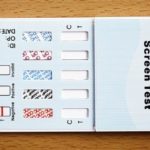The problem of doping in sports has rocked the sports world again this year. With Russia being banned from participating in the Olympics, at least their on-field athletes, it is about time that a panacea to both the athletes and the anti-doping officials will agree. Doping is a two-sided affair. This is because the vice has become more sophisticated to detect and thus measures of ensuring that the nutrients that athletes take do not give them an added advantage on the field have become more stringent.
There is a thin line between nutrient enrichment for the athletes and doping (Sport’s Doping Game: Surveillance in the Biotech Age, 2011). Some cases of doping have shocked sports spectators and officials alike as the athlete claim that they have no idea what they have been eating is actually doping. If such a case exists, then the problem cannot be placed entirely on the athletes. The anti-doping officials need to inform all athletes in all disciplines what constitute doping and the nutrients that either directly or indirectly lead to doping. By indirectly, we mean that some nutrient undergo metabolism in the body producing certain products that are actually doping. It is about time that this thin line is addressed and information distributed to athletes before we condemn them. The use of drug testing to regularly monitor the presence or even the increasing popularity of seemingly unknown substances is important.
Who is To Blame for Drug Use in Sports?
This article is in no way stating that doping is not to be blamed on athletes. On the contrary, about 90% of doping cases are usually the athlete’s own doing (Dowbiggin, 2009). However, such cases need to be addressed to avoid erroneous stripping of medals to deserving athletes and further stern actions that are taken in those cases.
In most societies, athletes are seen as heroes, people who offer hope and inspiration (Sport’s Doping Game: Surveillance in the Biotech Age, 2011). The basic understanding in many people is that the athletes are normal human beings who just work hard and eat well, and their hard work elevates them above all others in the field of sport. When such athletes are misconstrued to be doping, then the whole idea of heroes in the games to inspire the youth in the society is dealt a significant blow. Apart from that, doping also discourages many upcoming athletes. Most of them will see athletics as a sport that is tough to make it without the use of doping agents and when caught all is lost (Ruiz & Schwirtz, 2016). With such a perception, many young people are likely to give their hopes of becoming renowned sportsmen and women, up.
If this discouragement continues, then we may end up with no athletes in the future. Censorship is vital in the sports field when it comes to doping, but we need to ensure that all cases are well founded. Doping consequences for athletes need to be accurate because the effects if these actions affect many people across several divides as illustrated above. This brings us back to the primary purpose of this article, to draw a line on what constitutes doping and what does not? This is because what the stringent measure of doping has so far done is to instill fear in young athletes. This fear is useful in ensuring that they do not engage in doping when they reach a climax to their career. However, this fear also inhibits them from having proper nutrient care because they do not know what to eat and not eat as it may end up being doping (Dowbiggin, 2009). Therefore, there is a crucial need to get the right facts out there particularly in developing countries. This will ensure that such young athletes will able to reach their potential through hard work and adequate and appropriate nutrient intake without the fear of eating something that is potentially a doping agent whether directly or indirectly.
In a nutshell, the need for an improved and the more involving anti-doping campaign is long overdue. Athletes need to be well informed about nutrients particularly those that act as doping agents when they are metabolized in the body. This will improve the efficiency of the anti-doping measures currently being enforced. It will also ensure that the fear that the exercise instills in the athletes does not lead them to eat poorly by fearing to ingest certain foods that might contain these doping agents. By so doing, the problem of doping will have been well covered whereby athletes abide by the rules more strictly and flexibly feeling relaxed that they cannot get themselves into trouble without knowing.
References
Dowbiggin, B. (2009). Playing Fair. Beaver, 89(6), 23
Ruiz, R. R., & Schwirtz, M. (2016, May 13). An Insider In Sochi Tells How Russia Beat Doping Tests. (cover story). New York Times. pp. A1-B11.
Sport’s Doping Game: Surveillance in the Biotech Age. (2011). Sociology of Sport Journal, 28(4), 387-403.


Recent Comments